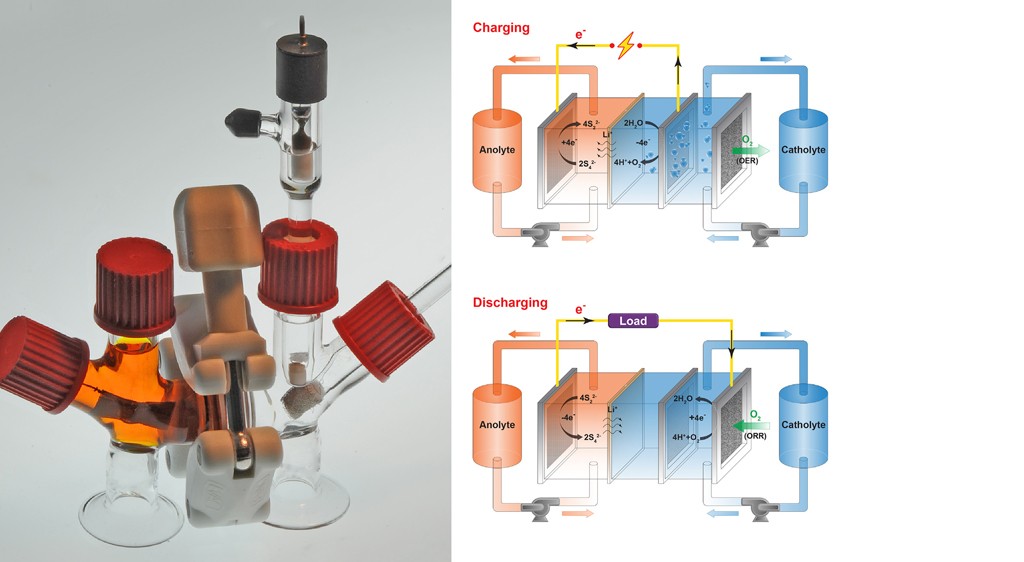MIT’s “air-breathing” battery can store electricity for months inexpensively
By EPR Magazine Editorial November 28, 2017 3:49 pm IST
By EPR Magazine Editorial November 28, 2017 3:49 pm IST

MIT researchers have developed an “air-breathing” battery that could store electricity for very long durations for about one-fifth the cost of current technologies, with minimal location restraints and zero emissions. The battery could be used to make sporadic renewable power a more reliable source of electricity for the grid.
For its anode, the rechargeable flow battery uses cheap, abundant sulphur dissolved in water. An aerated liquid salt solution in the cathode continuously takes in and releases oxygen that balances charge as ions shuttle between the electrodes. Oxygen flowing into the cathode causes the anode to discharge electrons to an external circuit. Oxygen flowing out sends electrons back to the anode, recharging the battery.
“This battery literally inhales and exhales air, but it doesn’t exhale carbon dioxide, like humans — it exhales oxygen,” says Yet-Ming Chiang, the Kyocera Professor of Materials Science and Engineering at MIT and co-author of a paper describing the battery.
The battery’s total chemical cost — the combined price of the cathode, anode, and electrolyte materials — is about 1/30th the cost of competing batteries, such as lithium-ion batteries. Scaled-up systems could be used to store electricity from wind or solar power, for multiple days to entire seasons, for about $20 to $30 per kilowatt hour.
We use cookies to personalize your experience. By continuing to visit this website you agree to our Terms & Conditions, Privacy Policy and Cookie Policy.